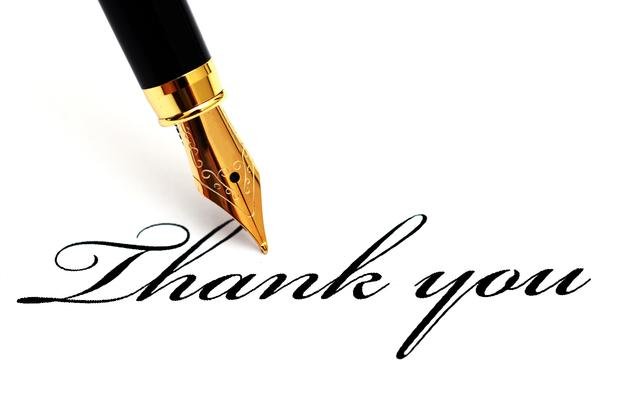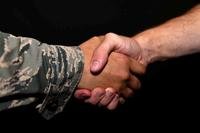Believe it or not, in this 21st-century world we live in, there is still an appreciation for the handwritten thank-you note.
When I present this idea in my trainings, I am often challenged with:
- But isn't everyone on email? Why write a note when email is faster?
- I'm environmentally sensitive. Why waste paper and a stamp?
- My parents wrote thank-you notes. My generation texts or emails.
- Does anyone read them anymore? Snail mail is dead.
I disagree with each of these statements (except that my parents wrote thank-you notes and taught me to as well).
Here are some reasons why a handwritten thank-you note is important:
- There is value to the fact that someone took the time to write out (by hand) a sentiment to reflect a meeting, interview, assistance or information that they perceived as valuable.
- It takes more effort to handwrite a note, put a stamp on it and walk it to the mailbox than to hit "send" on an email.
- If you personalize the note, you make it special.
- It's very likely the recipient will retain the handwritten note. Again, it feels special.
- Few people write them today, making the sender stand out among a sea of sameness.
Related: Search for Veteran Jobs
Handwritten Note Basics
Your handwritten note doesn't need to be awe-inspiring or poetic, but it does need to be:
Legible. If you have sloppy handwriting, take your time and write slowly. Or, if you must, enlist a friend to write out your words for you. Make sure your note is readable.
Personal. Comment on something said during the interview or meeting that you consider memorable. Refer to something that happened at the event or note why the invitation was meaningful to you. Personalize the note so the recipient feels special.
Correctly addressed. Be sure to include suite number, zip code and the person's full title on the outside envelope. Small details can make the difference between your note being delivered quickly or weeks later.
Signed. When you sign off your note, avoid being too personal ("Love, Frank") or too formal ("Respectfully yours, Frank"). A simple "Sincerely" is fine.
Timely. If you wait until the weekend to write your note, then find a stamp, get it to the mailbox and wait for the mail to be delivered, you could be talking about a week or more before it's received. Instead, send your note the day of the meeting or call. That way, the date stamp on the note will show that you were quick to thank them for their time.
Keep Them Handy
A colleague of mine has a great system. He buys USPS "Forever" stamps and keeps them in his car. He also has two different kinds of thank-you notes in his glove box -- one more formal, with an embossed "Thank You" on the outside of a linen, cream notecard with matching envelope.
The other set contains a series of funny cards featuring silly animals. When he's finished with a meeting (client meeting, sales pitch, networking meeting or other), he writes out the note while sitting in his car. He puts a stamp on it, and into a nearby mailbox, it goes.
In some cases, his contacts receive their note the next day, much to their surprise and delight.
Notes Matter
Many of my clients can point to a drawer in their office where they stash the personalized, handwritten thank-you notes they've received. They save them. I save them.
When someone takes the time to personalize a note to me, I keep it. I am fortunate enough to say I have received quite a few. I read them again from time to time, and it always puts a smile on my face.
The Next Step: Get Veteran Jobs Tips
Looking for transition and veteran jobs tips? Military.com has you covered. Sign up for a free Military.com membership to have military news, updates and job resources delivered directly to your inbox.












